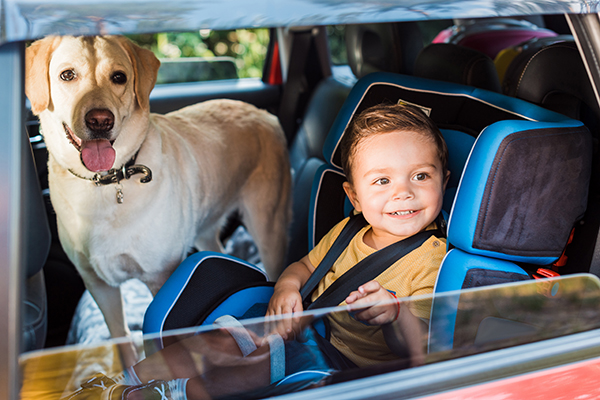
When it comes to bringing a new pet into your home, preparation is crucial in order for them to make a successful transition. It can take days, weeks, or even several months for your pet to consider your home their new home. Here are our top tips for helping your new pet settle in.
Supplies and equipment
Ensure that you have all of the supplies and equipment that your new pet will need. This includes fundamental items such as a bed, water bowl, and food, as well as toys and other items to stimulate their cognitive development and keep them entertained. Remember that your pets’ emotional wellbeing and mental stimulation is just as important as their physical needs.
Prepare any other pets in the home
Ensure that any other pets in the home are up to date with their vaccinations. Whilst shelters do their best to treat any viruses, occasionally re-homed pets do bring new diseases with them that could be transmitted to existing pets in the household.
You may also have to introduce existing pets to your new pet gradually until they get used to one another. For cats especially, keep your new friend in a separate room for at least 3 days prior to slowly introducing them to established housemates under supervision. With dogs, we recommend introduction outside the house in a neutral environment. Remember to support the established pet in the household and give them separate access to attention and resources. Dogs live in a hierarchy and there are more likely to be dominance issues in the future if you support the new puppy rather than the established dog. Remember you have just brought home your established pet’s new roommate and life partner with no input from them! It’s going to be an adjustment.
Register with a Veterinarian
As soon as you bring your pet home you should register with a veterinarian and make an appointment for your pet to have a thorough health check. Ideally, this should be done within a week of their arrival. They can advise on the correct vaccination protocol for your pet and ensure that there are no underlying illnesses or concerns. When possible, send all available medical records to your veterinarian ahead of time so they can review the information prior to your first appointment.
You should also speak to your veterinarian about spaying or neutering your pet if your pet hasn’t already been altered. We would be happy to discuss the pros and cons of spaying and neutering.
Establish rules and guidelines in advance
Establishing some basic house rules ahead of your pets’ arrival can help create a routine that your pet will quickly adopt. Knowing what to expect will also help him settle in much faster. Assigning specific responsibilities to family members can help them bond with your pet and take ownership of their commitment as a pet owner.
Being consistent with rules for your pet will make training them much easier. For example, do not start off by letting your pet sleep on the sofas if this is not a behavior you want to continue in the future.
Toilet training
When it comes to training your pet to do their business in the correct location, patience is definitely a virtue. Be consistent and stick to a routine. If you have a dog then let them outside at the same times every day – first thing in the morning, last thing at night, and after meals is a good place to start. Most kittens are trained to use the litter box before they go to their new homes. If you need to reinforce this training then place them in the litter tray after waking and meals. With both dogs and cats, positive behavior reinforcement by way of praise, attention, affection, and treats is the quickest and easiest way to get them trained.
Take the day off and limit visitors for a while
If you can, taking the day off to spend with your new pet is an ideal way to help them settle into their new home. It is crucial to give you and your pet time to get to know one another without outside pressures.
Try and limit new visitors to the house to a minimum until your pet has settled in. It is most important that your pet gets to bond with you and your family first of all.
Prepare children
Children are naturally curious creatures and will no doubt be extremely excited by the arrival of your new pet. Explain to them that animals take some time to adjust to a new environment and may be scared, nervous, and wary of them for a few days. Take the time to educate your children about how to treat your pet with the care and respect that they deserve.
Adopting an older pet?
If you are adopting an older pet it is prudent to try and find out as much as possible about the history of the animal. You will then know what sort of temperament and behavior to expect. You will also know any considerations that you may need to make.
Exercising your dog
Exercise is a great time to bond with your dog and provides good mental stimulation for them. Regular walks or runs, fetch, swimming, agility, flyball, or a trip to the dog park are all great ways to keep your pet moving. When exercising your dog do not let him off the lead unless you are confident in your training and have practiced recall around distractions. Make sure he has a secure means of identification, either in the form of a collar and tag or ideally a microchip. Please also be aware of leash laws and regulations in your location.
Letting your feline outside
Some people prefer to have their cats live indoors and outdoors. If you decide to let your cat outside please be aware of the risks from vehicles and wildlife. Your cat should have adequate identification, be spayed/neutered, and up to date on their vaccines. Cats can wander quite far from home and you want to make sure you can be contacted if she gets lost.
Some people wish to give their cats the mental stimulation of being outdoors without the risk. In these cases, taking your cat out on a leash or have a built-in “catio” may be an option. Keep in mind, being outside is not for all cats. If a cat has been indoor only all its life, it may panic in wide-open spaces or with traffic noises.
https://www.amazinginteriordesign.com/build-catio-cat-enjoy/

